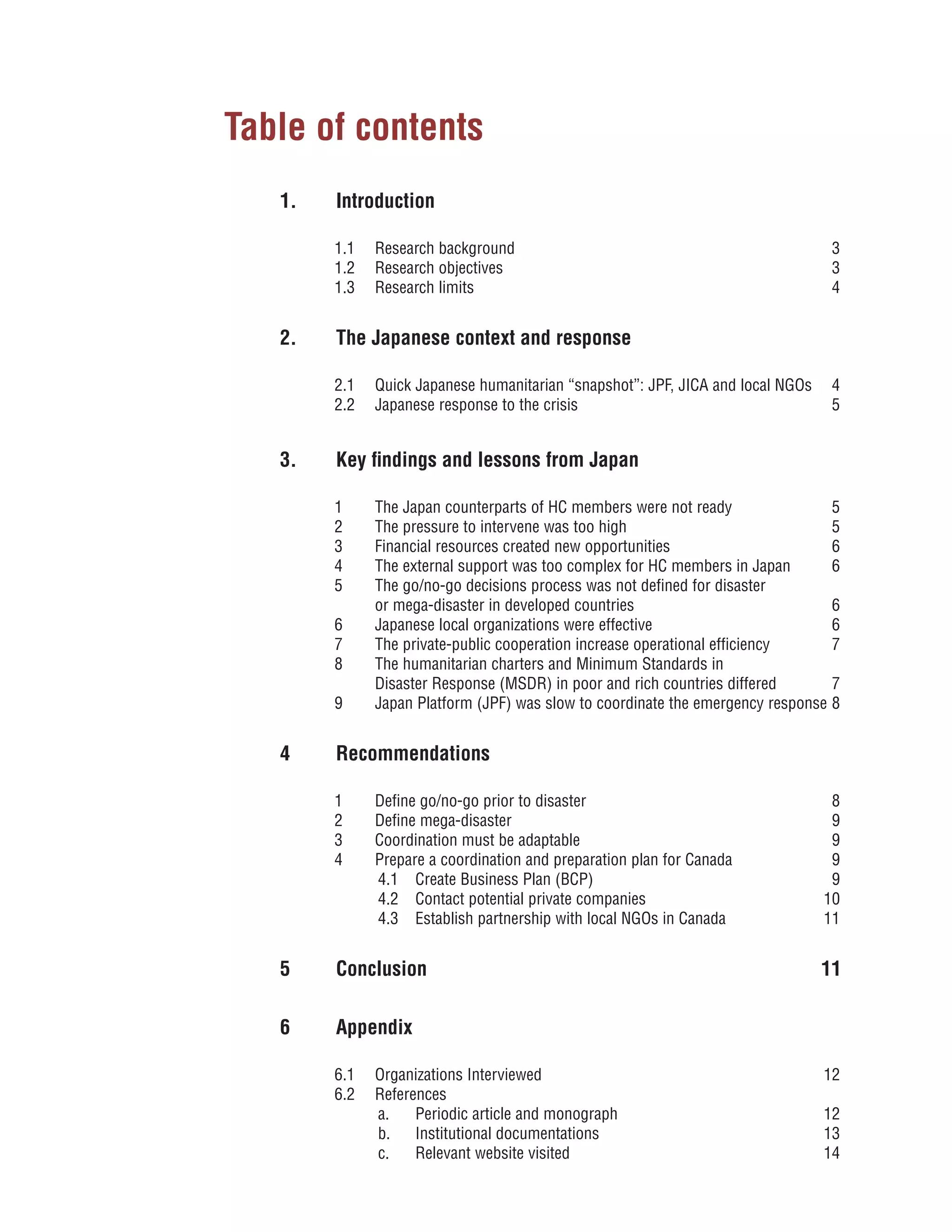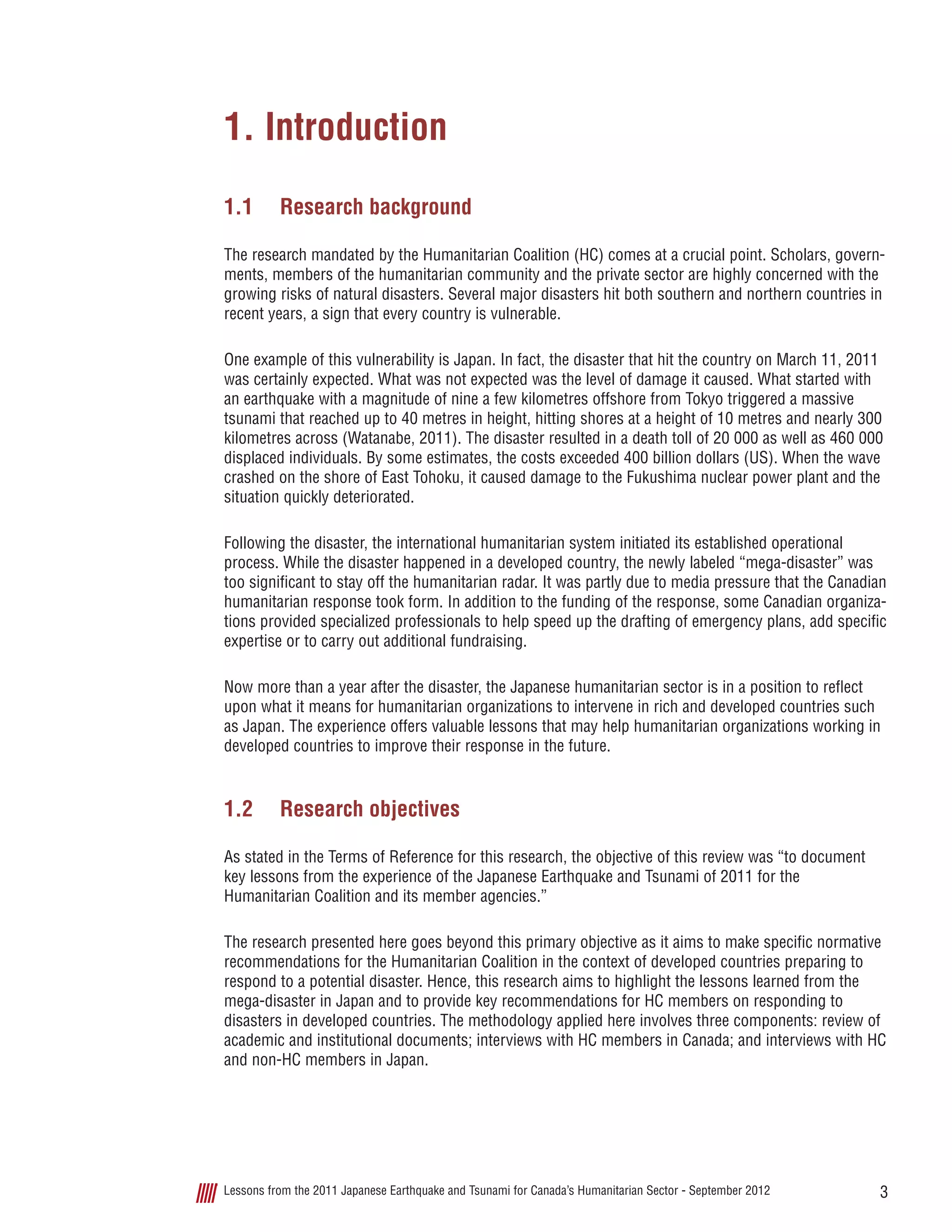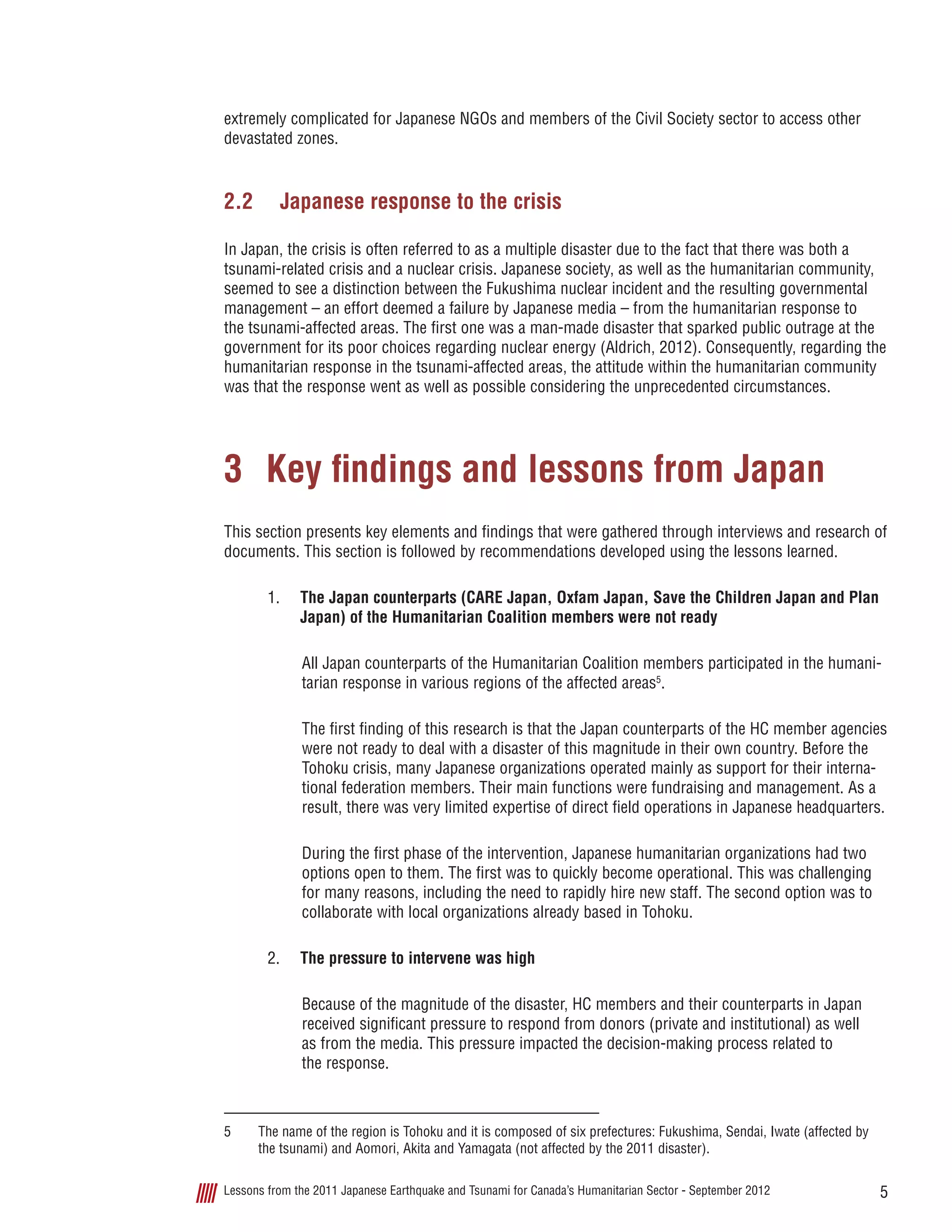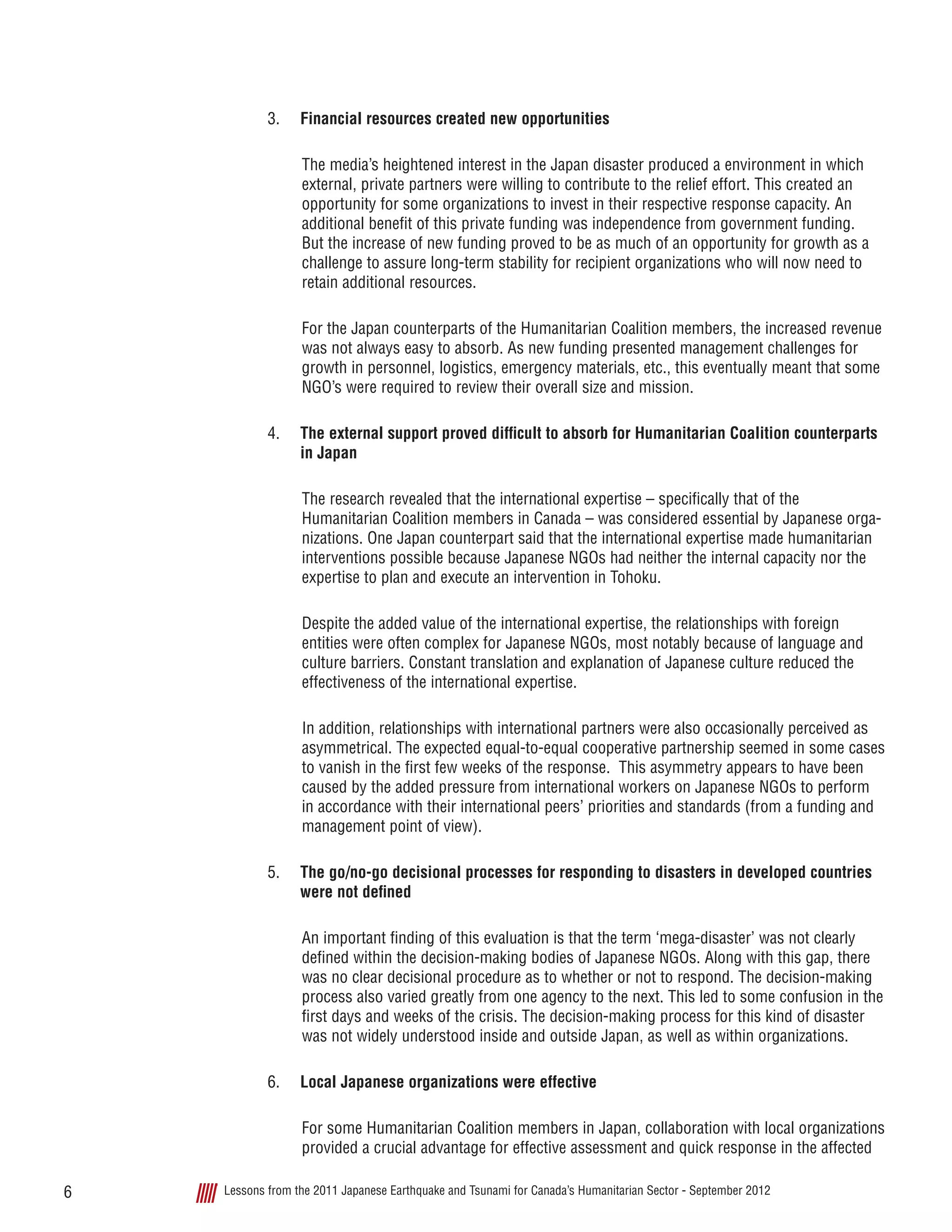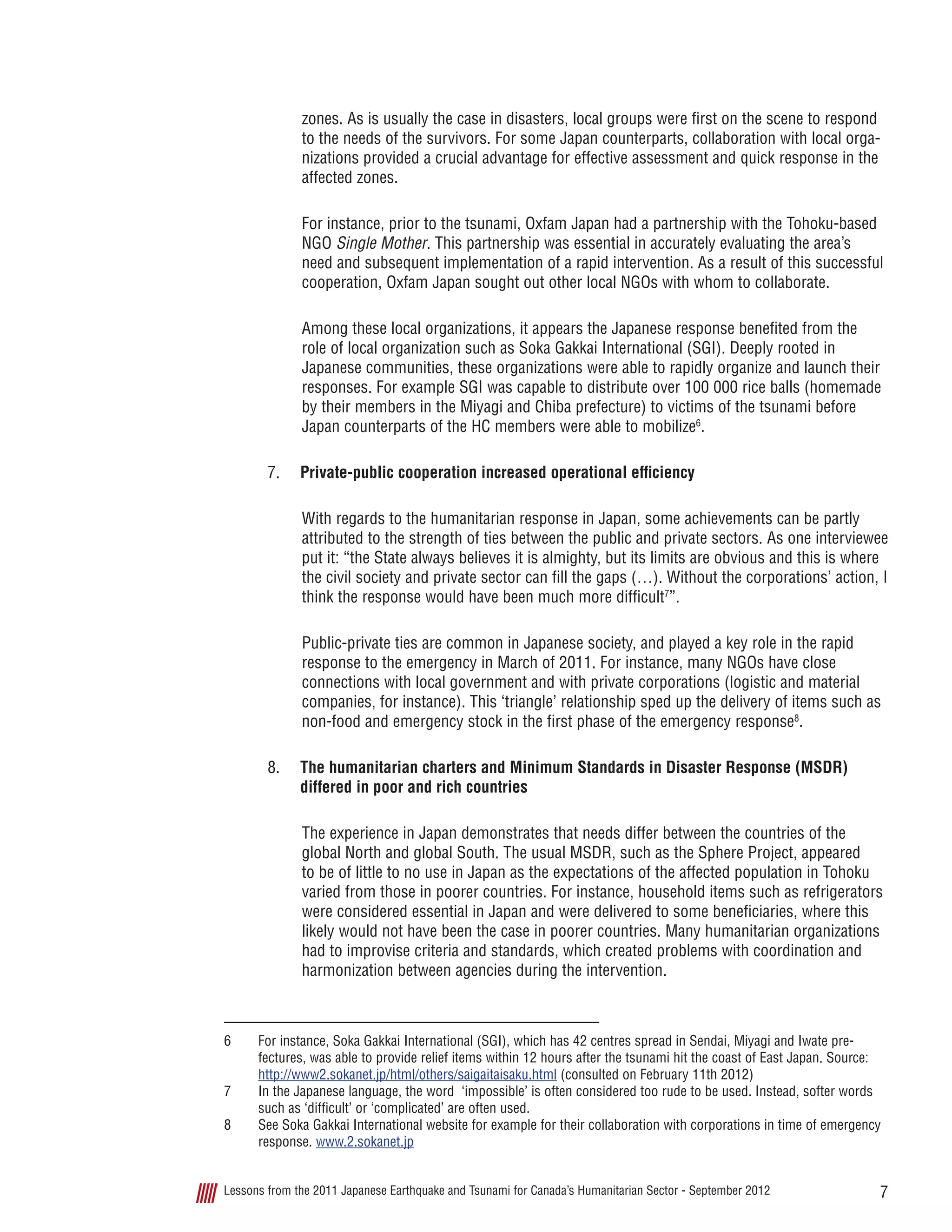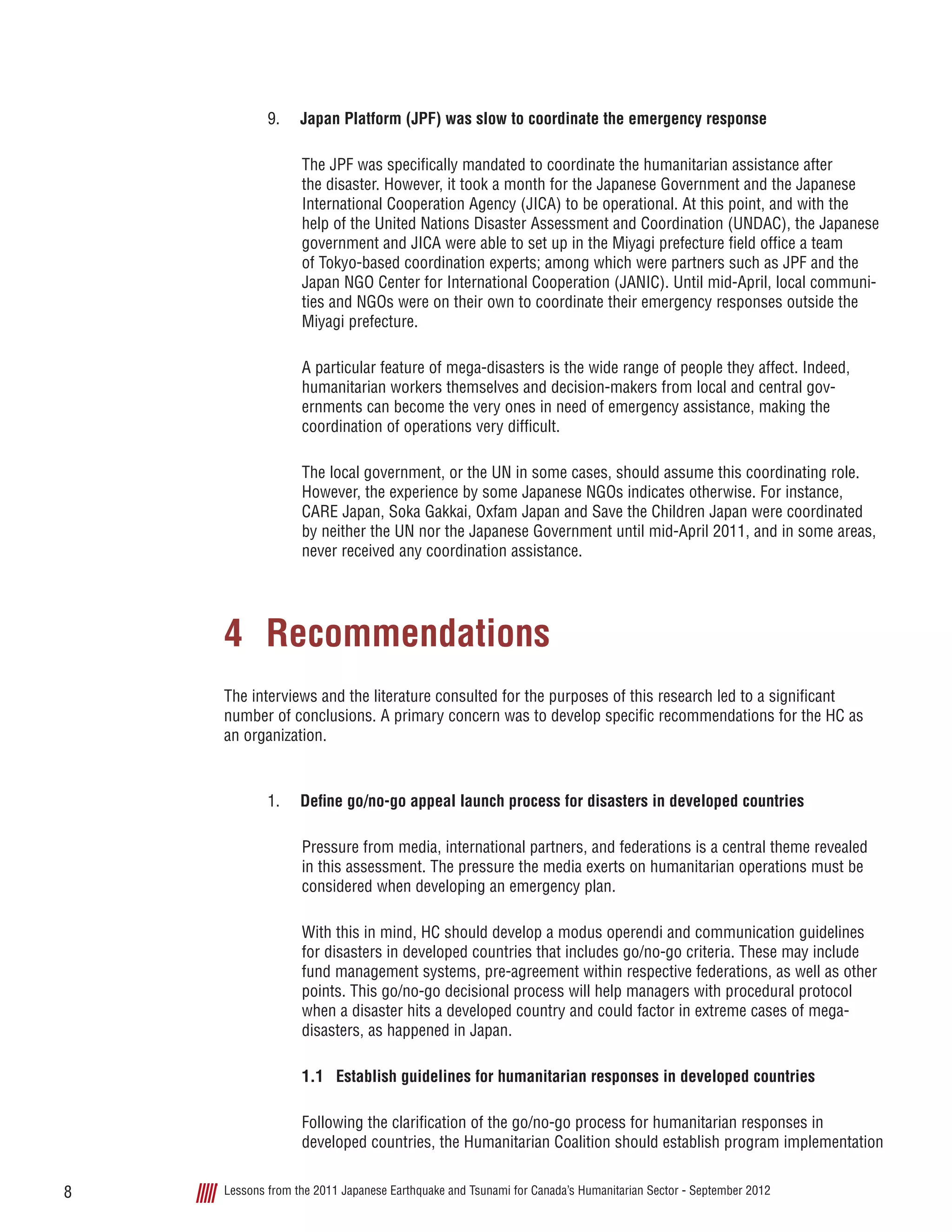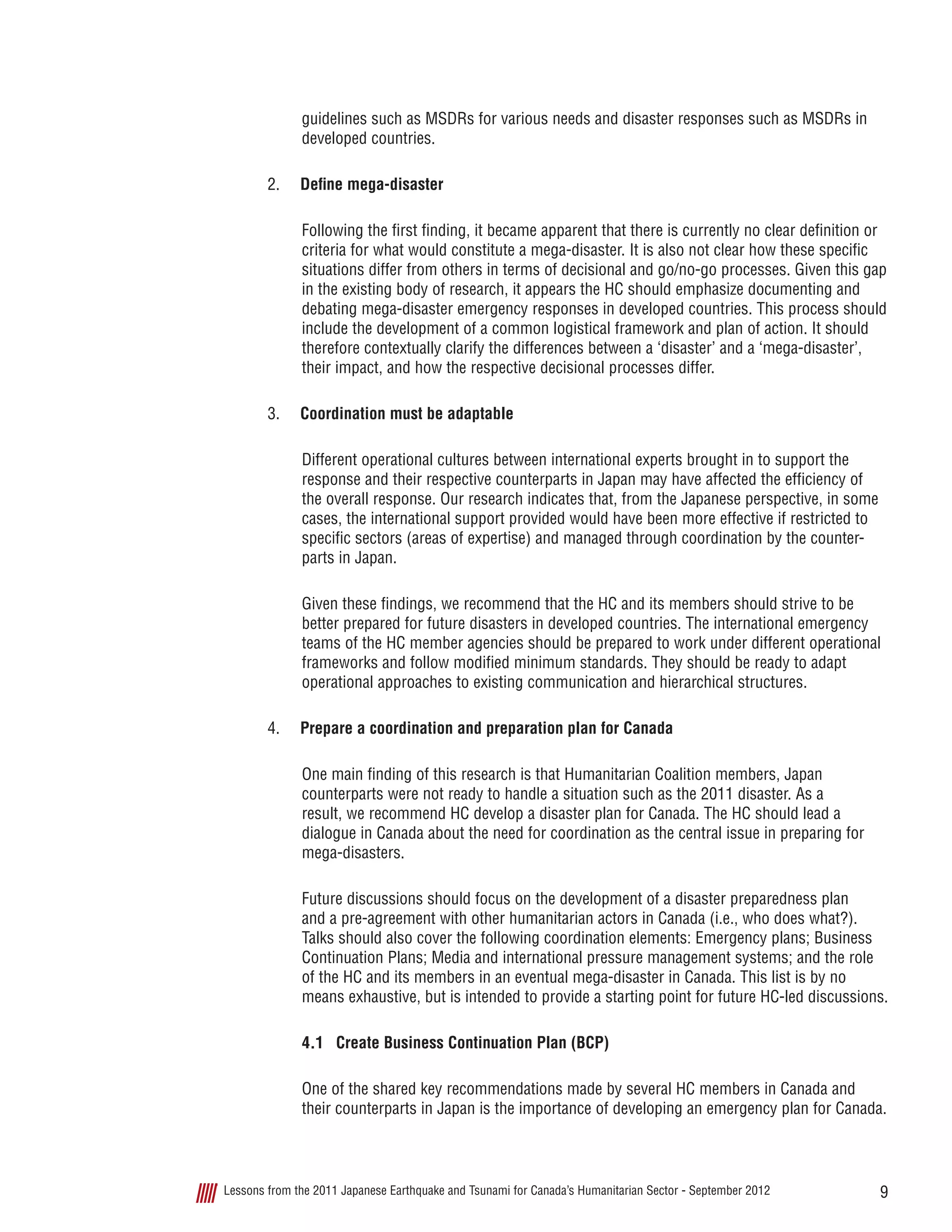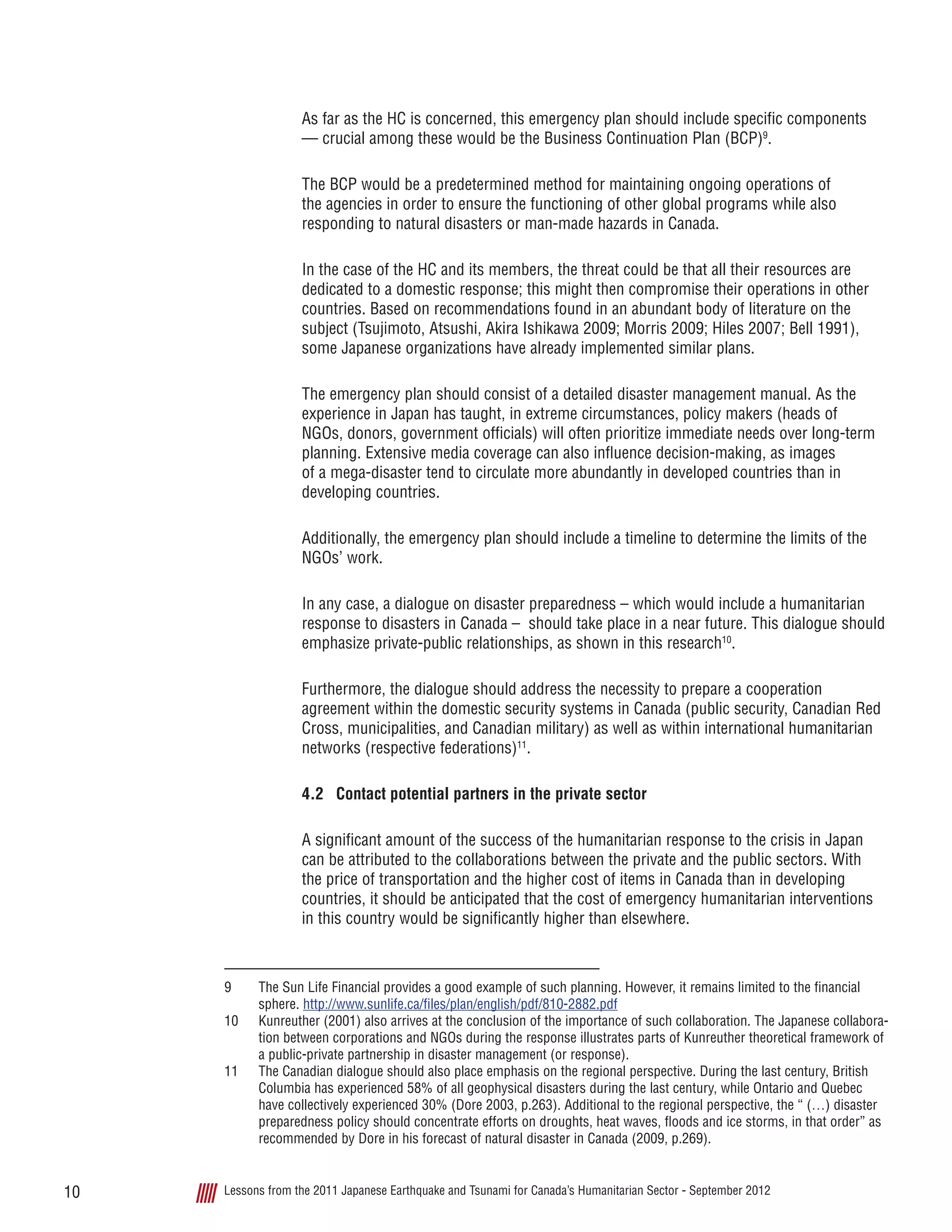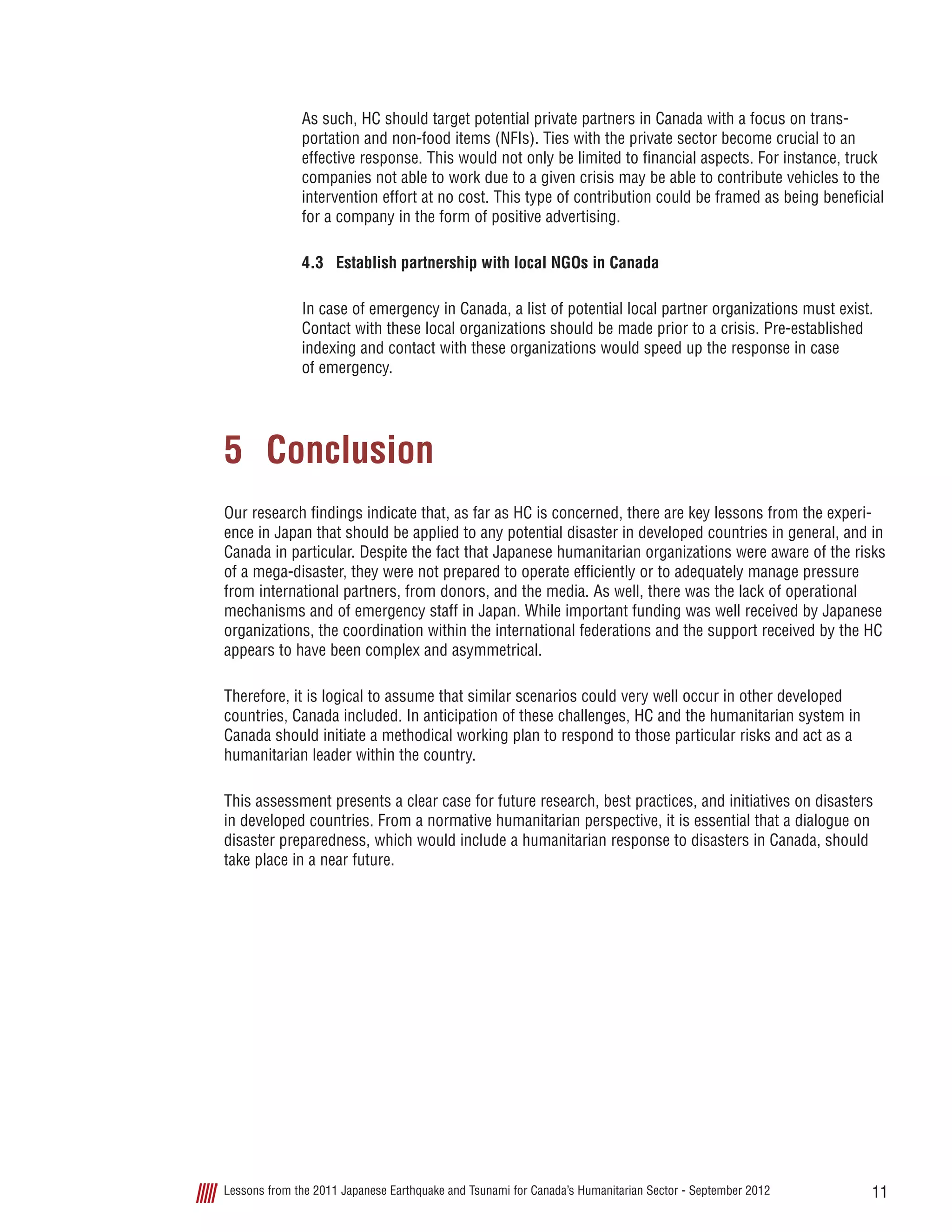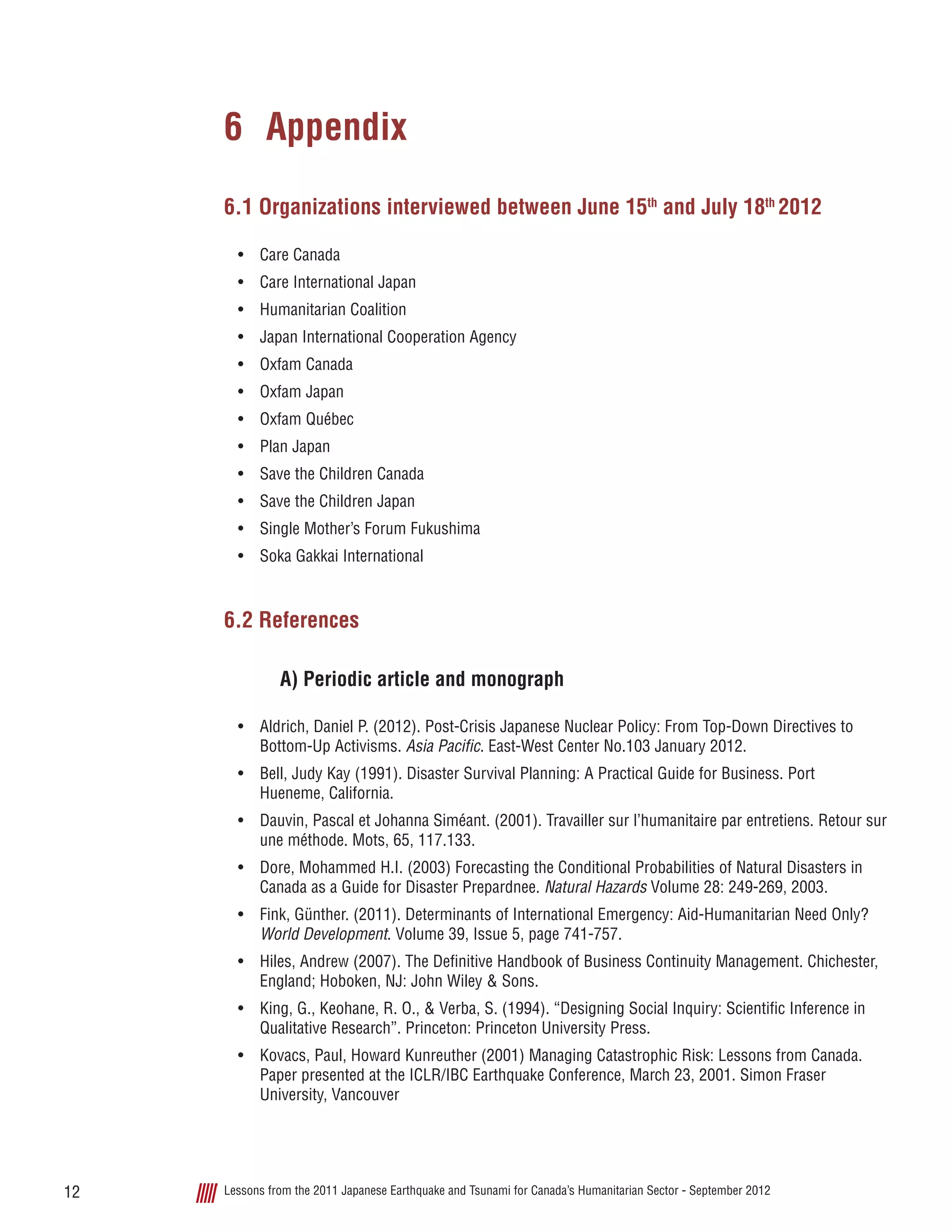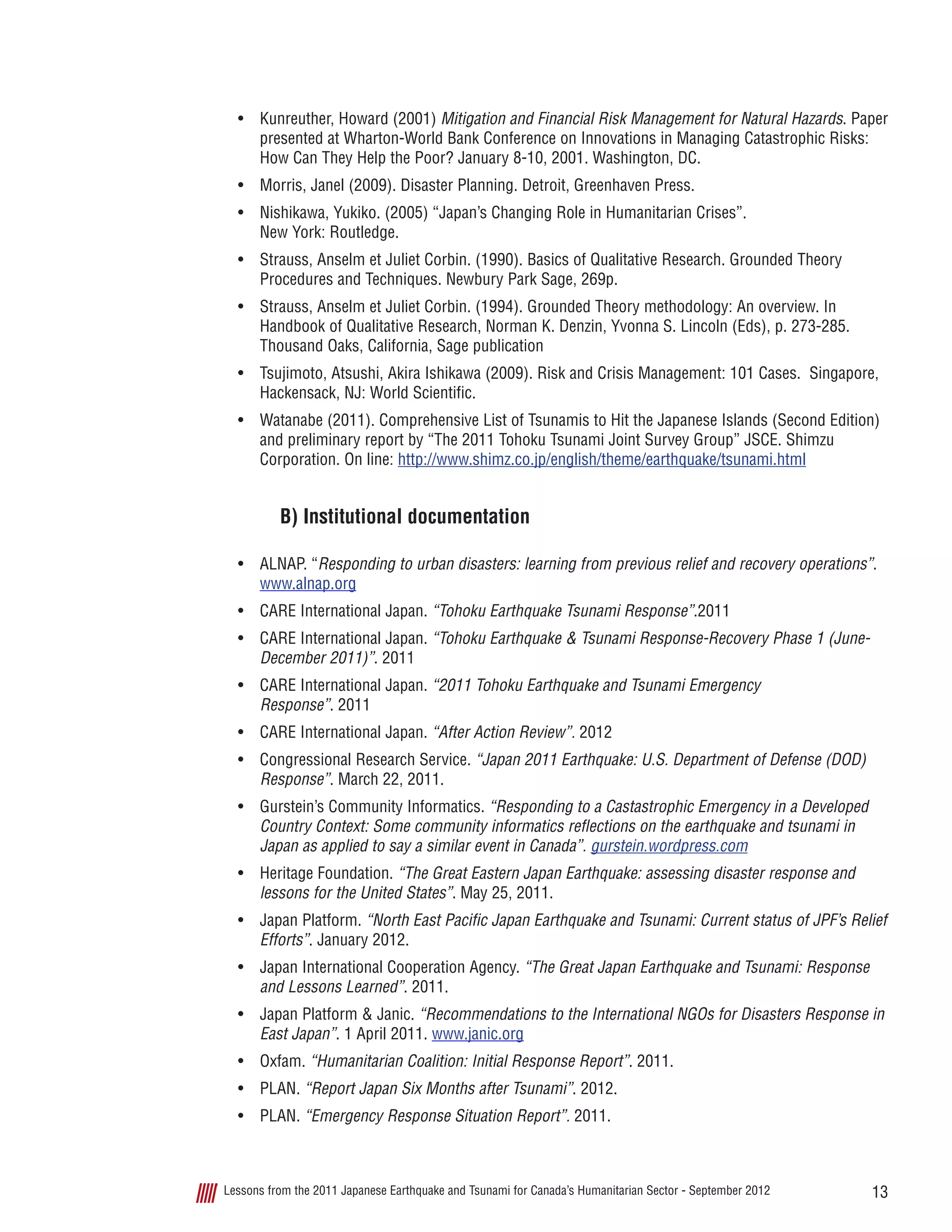1) The Japan counterparts of Humanitarian Coalition members were not prepared to respond to a disaster of this magnitude occurring in their own country. Local Japanese organizations responded more quickly due to their deep community roots.
2) High pressure from donors and media to intervene impacted decision making for Japanese organizations. Increased private funding also created new opportunities but management challenges.
3) International expertise from Humanitarian Coalition members was valuable but relationships were complex due to language and cultural barriers. Standards for disaster response also differed between developed and developing countries.

